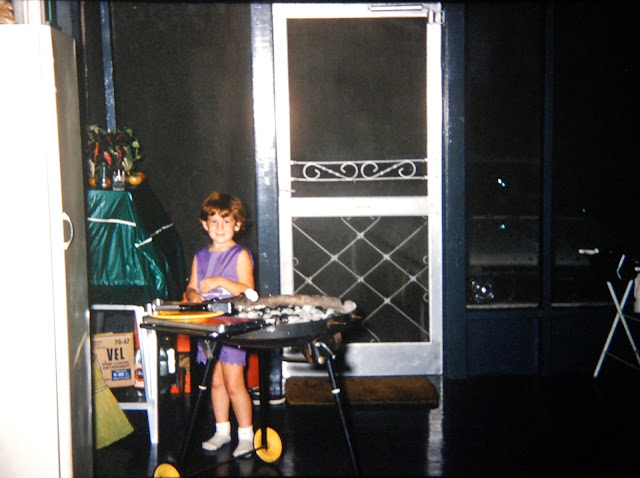 |
| As wonderful as "The Beach" was, for my family it was slightly second to "The Lake." |
During the 1930s and 1940s, originally as part of the WPA, the government damned the Santee River in SC producing Lake Marion. Part of Lake Marion's shore line is in Clarendon County, where my grandparents lived in the small town of Manning. In the early 1950s, my grandparents built a summer house on Lake Marion. The house was about twenty miles from Manning, and you got to it by first going down a two-lane paved road and then a dirt road that winded through cornfields. If you look carefully, you can see that the painting in the banner of my blog is the same house as the one in the picture above. In 1953, my father made the painting in the banner and took the picture you are looking at.
In Manning, my grandparents, Jack and Sally Goldstein--like so many Jewish people of their generation in the south--owned a small store. (Though I must say that my grandparents' store was considered a cut above many other similar stores because my grandmother was widely known as a woman with "very good taste.")
 |
| My grandparents, Sally and Jack Goldstein |
My grandfather wanted a house at the lake, and my grandmother, a member of the Manning Garden Club and a woman whose only outdoor activity was supervising the man who gardened for her, agreed on the condition that the house on the lake would be as nice as the house in town. For my brother and sister and cousins and me, our grandparents' lake house was the most beautiful and wonderful place on earth.
We loved our grandparents' lake house because we loved being in the water and we loved our grandparents and we loved life as it was lived at the lake.
 |
| My brother Ben Somberg and me at the lake. |
But also because my grandparents loved their grandchildren very much and made it a place where the children and the grown-ups found great pleasure.
 |
| My mother Harriet Somberg with her sister Miriam Mann and their children Terry Mann, my brother Ben and me. |
There was a shuffleboard court and a croquet field. My grandfather had a "big boat" he used to take us out in the lake, and a "little boat" we could paddle in. There was a big screen porch around two sides of the house, and in each corner was a Pawley's Island hammock where we children would play and I, as I grew older, would read novels. Every night my grandfather would make a martini and, along with any grandchild who wanted to join him, would walk down to the lake and tell us stories. We adored our grandfather.
 |
| My Granddaddy Jack. |
We also loved our grandmother, but with her we had to behave. She dearly loved us as well,but she didn't play with us like my grandfather did.
 |
| My Nanny Sally |
We went to the lake every summer. We grew up there and we loved it every year in a new way.
 |
| My brother Ben catching his first fish. |
 |
| My brother Ben and my sister Sandy paddling in the "little boat," while my grandfather fished. |
 |
| My brother Ben playing War. Ben is now one of the most liberal people I know, which just goes to show that playing games doesn't necessarily lead to action. |
 |
| My sister Sandy toasting marshmallows. The food was always great at the lake. |
 |
| My brother Ben with two of our Mann cousins, |
 |
| Sandy. Behind is the "big boat." |
 |
| My father Sy Somberg. One of the few pictures he didn't take. |
 |
| My mother, Harriet Somberg. |
 |
| Sandy. She was such a cutie. |
 |
| Growing up at the lake. |
The lake ended in 1963, when my grandfather suddenly died of aplastic anemia. Born with the century, he was 63 at his death. My grandmother almost immediately sold the lake house because being there was too painful. She never got over his death.
"The lake" has an almost mythic status in my family. Because our grandmother sold the house so quickly, we never went back after our grandfather died. So it is enshrined in our imaginations as Arcadia. And we only have brief glimpses in our memories, in the stories we tell each other, in the pictures my father took, and in the painting that hangs over the mantle in my new lake house.
As you might imagine, my love of Lake Medora stems in part from my love of "the lake" in South Carolina. There are even some things in Tony's and my lake house that come from my grandparents' lake house--like some of the lake dishes and my grandfather's martini pitcher. Our home at Lake Medora also has many of the allures of my childhood loves. When I am here, I swim, read novels, eat good food, and occasionally drink a martini. I will write more about all that in my next post.
#TheLake
#LakeMarion
#Family
#Memories













